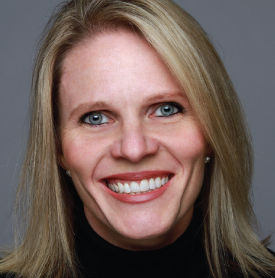Regulatory expectations are dramatically changing the industry. Operations and processes are affected, without question, but at a higher level, the rule makers are actually remaking the competitive landscape, in ways that are both obvious, and not.First, the obvious: The number of MGAs that an insurance carrier will deal with is declining. Smaller operations often lack the resources to manage regulatory requirements, and the days where a single advisor with underlings could call themselves an MGA are numbered, if not long-gone, altogether.
In a panel discussion at the recent Canadian Association of Independent Life Brokerage Agencies (CAILBA) annual conference in Toronto, HUB Financial president, Terri DiFlorio (also the CAILBA technology chair), discussed the current regulated environment with carrier executives, Caron Czorny, vice president of business development with BMO Insurance, Phil Marsillo, senior vice president, individual distribution, at Canada Life, Daniel Dessureault, vice president of retail insurance distribution at Empire Life, and Ray Mackenzie, senior vice president of sales and distribution at Transamerica Life Canada.
In discussing the issue, Marsillo says Canada Life currently deals with over 40 MGAs. “I don’t see that number going down to five. We won’t go down to one, but we won’t be going up to 100 either.” Three years ago, Transamerica, meanwhile, maintained contracts with roughly 90 MGAs. Today the number is closer to 50, with the company actively working with 35. Three years from now, Mackenzie says the number will likely be closer to 25.
“There aren’t going to be different rules for different MGAs,” Marsillo told the group. While large MGAs have processes in place today, those who are smaller will still need to keep pace, resources permitting, or not.
This ability, in fact, will likely be the largest determining factor carriers will look at when deciding who they will contract with in the future. Although productivity will matter, “I think the big fact that will influence how many we deal with, is how many MGAs will be able to get up to the standard that regulators expect,” he says. “If we don’t work together and adopt rules and regulations, they will be imposed on us.”
This language of collaboration is the second, less obvious way regulatory expectations appear to be remaking the landscape. MGA executives speak openly about acquiring, or being acquired, more frequently, and without the same emotion that might’ve been attached to such a discussion in the past.
The ‘joining of forces’ is obvious in a real way too, where one-time competitors – friendly competitors, but competitors nonetheless – now sit together as partners of larger firms.
Technology is catching up, as well, with several of those gathered citing a new Logiq3 project for advisor screening, contracting and compliance, as a positive step. The company currently has four major carriers and four large MGAs collaborating on the reporting effort.
Carrier executives themselves, meanwhile, say they expect to see hybrid companies or partnerships in the future – with non-traditional sales being processed by MGAs, with some MGAs generating direct sales in cooperation with advisors, and possibly in cooperation with lead generation companies, as well.
In talking, briefly, about her own time spent running an MGA, Czorny hit closer to the theme, saying “One of the things I took away from that experience, is that not all MGAs are your mortal enemy. I think CAILBA is a good example of how that’s growing. You have to learn that sometimes you can work with your colleagues, as MGAs, and get more efficiencies.”
The carrier executives also talked about fostering closer ties with carriers themselves. If panelists were in a position of leadership at an MGA today, “I would advocate for proactive conversations with carriers,” Mackenzie told the group. “There’s a lot that’s working, but in terms of the future, looking forward, how can we work with carriers? What are the things we can do so we both benefit?”
Closer ties
Often by virtue of their own contracts, MGAs today are already required to have closer ties – reporting advisors, for example, instead of allowing so-called “bad apples” to bounce from one MGA to the next. With no central reporting mechanism like the proposed Logiq3’s initiative, and with their own broker contracts as protection, this often happened with impunity.
When reminded of this reporting responsibility, however, MGA executives point out this effort to communicate – in identifying rogue agents, for example – is still rather one-sided today, where carriers seldom extend the courtesy of following up when such reports are made.
Still, “you can rest assured,” Marsillo told the group, “that when we get information from an MGA about an advisor, you might not hear back from us, but I can guarantee they are investigating.
“There are very few bad apples in the industry. Very, very few. Those that are, make it bad for the rest of us. I think if we work together, share information, credible information, we’ll get them out of the business. And we’ll be better for it. The consumer will be better for it.”




